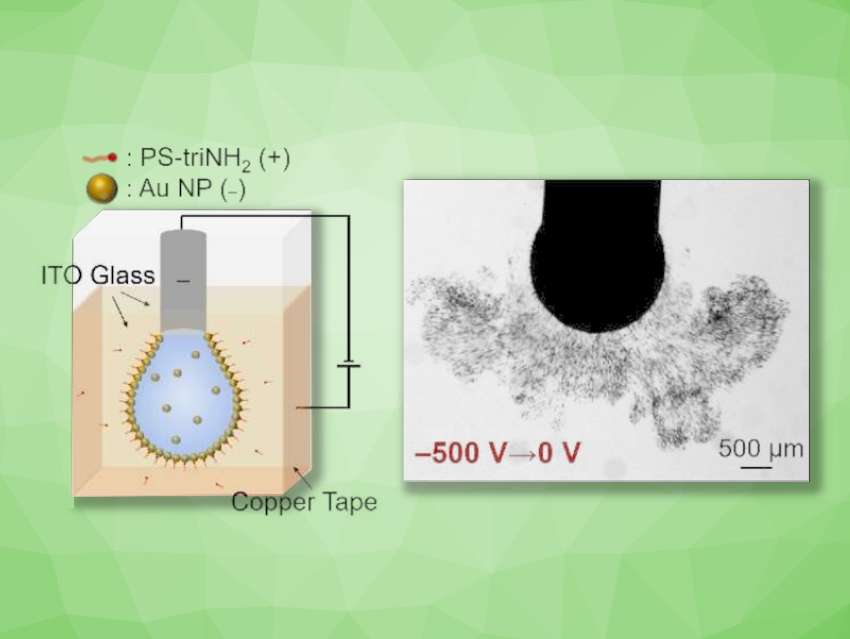Some self-assembled systems can be trapped in out-of-equilibrium states. Such out-of-equilibrium self-assembled structures can be used to create dynamic, “active” systems, such as self-propulsion systems or soft microrobots. External fields/stimuli can be used to generate out-of-equilibrium self-assembled structures, e.g., by a varying temperature, an electric or magnetic field, light, or the presence of chemical fuels. When the external field is removed, the system attempts to relax to the equilibrium state. Depending on the conditions in the out-of-equilibrium state, this can happen very slowly or in an instant.
Thomas P. Russell, Lawrence Berkeley National Laboratory, Berkeley, CA, USA, University of Massachusetts, Amherst, USA, and Tohoku University, Sendai, Japan, and colleagues have created oversaturated assemblies of charged nanoparticles and surfactant molecules at an interface that can be held in place by an external electric field. When the was removed, the team observed an “explosive emulsification” (pictured above). The researchers used an aqueous dispersion of carboxyl-functionalized (i.e., negatively charged) spherical gold nanoparticles (Au NPs) and a toluene solution of ω-(diethylene triamine)-terminated polystyrene (PS-triNH2) as a cationic surfactant to create an assembly of Au NPs at the interface of a water/toluene bilayer. The strong electrostatic interactions between the negatively charged Au NPs and the positively charged surfactant lead to a dense assembly.
When the assembly is subjected to an external electric field, the charged NPs are forced towards the interface, leading to an even higher density of nanoparticles/surfactant molecules at the interface, but also to an increased electrostatic repulsion between them—i.e., an oversaturated packing of nanoparticles at the interface. When the electric field is removed, the in-plane pressure arising from the electrostatic repulsion between the nanoparticles destabilizes the interface and triggers an explosive emulsification, releasing hundreds of thousands of microdroplets into the oil phase. According to the team, this could be used to design an “active droplet system” tailored to specific applications.
- Oversaturating Liquid Interfaces with Nanoparticle‐Surfactants,
Xuefei Wu, Han Xue, Zachary Fink, Brett A. Helms, Paul D. Ashby, Ahmad K. Omar, Thomas P Russell,
Angew. Chem. Int. Ed. 2024.
https://doi.org/10.1002/anie.202403790




